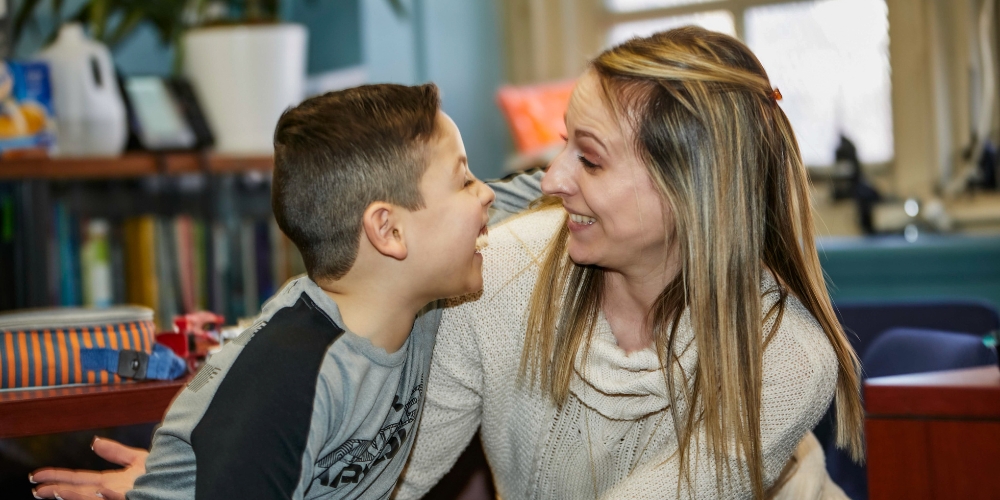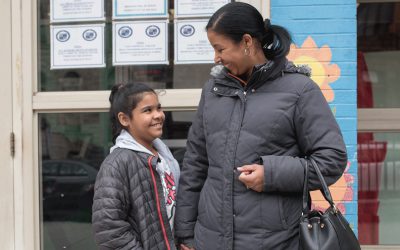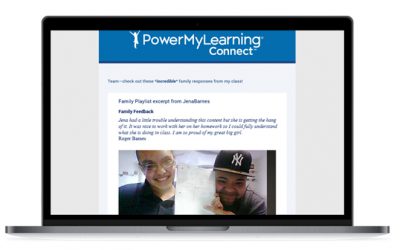4 Tools to Engage Families as Learning Partners | ISTE18 Recap
This post is authored by PowerMyLearning Coaches (and #ISTE18 presenters!) Maria Morrisson Copolillo and Kendra Frank.
We know that teachers need better resources to engage families. According to a national survey, almost all teachers (99%) believe family engagement is important to student success; however, three-quarters of educators (74%) say they need help engaging their students’ families.
This could be why our sold-out #ISTE18 session, “Engaging Families as Partners Using Digital Tools,” was such a huge hit.
In case you missed it, we wanted to share four resources from our presentation that you can use to engage families as learning partners.
1. Set Meaningful Goals Around Family Engagement
What do you want to accomplish with family engagement this year? Use this template to brainstorm your goals and action items.
Remember that goals should be SMARTe: specific, measurable, achievable, realistic, time-bound, and account for the environment.
Setting family engagement goals! Brainstorming ideas, can’t wait for conference nights this year! @PowerMyLearning pic.twitter.com/5cmzfVSUW4
— Megan Peterson (@missmpeterson)
2. Send Home Low-Tech, Low-Cost Tools for Families
One of the resources we shared that got the biggest audience response was the super low-tech Fridge Card!
This idea came from two of the most awesome teachers Maria has ever worked with (shout-out to Ms. Barbot and Ms. Hammond!) who created them for middle schoolers when students were struggling to remember passwords and important information once they got home.
The idea is simple: print important information like teachers’ contact information and logins on a brightly-colored piece of paper. Laminate (or don’t!). Attach a few strips of magnet tape to the back. Send it home with instructions to keep on the fridge!
Click here to download our Fridge Card template. Note: download the Microsoft Word document instead of using Google Docs to get the best formatting.
#brilliant idea shared by @PowerMyLearning on giving contact info to parents to have easily accessible. FRIDGE CARD (cardstock + magnetic tape + goes home). Ready for a simple, low-tech upgrade to parent communication efforts? Try it this year! pic.twitter.com/36h4RI7BcQ
— Chris Noble (@H122CNoble)
3. Blast Off! Use a Weekly Newsletter
Share highlights, important class notes, and key reminders using a weekly email blast to families.
Kendra worked with a teacher who created podcasts and screencasts of the week’s most difficult lessons and included them in her weekly e-blast. This empowered families to assist their children with homework and gave students the opportunity to revisit difficult material.
Maria worked with one teacher who would take a picture of a student’s exemplar in-class notes and share them via email to all families on Monday, with an encouragement to family partners to check their student’s notebook and make sure they weren’t missing any information.
Click here to check out our sample template! We like using Google Drawings because it’s so easy to format. Note: Select “Make a copy” in the File drop-down menu to edit the template.
Once you get the hang of it, you can have your students create their own personal newsletters in Google Drawings to send home.
Pro Tip: Don’t forget to put all family member email addresses in the BCC line so that you don’t end up with a very long reply-all chain!
Thx for the great ideas to engage families as learning partners! #iste2018 @PowerMyLearning pic.twitter.com/R3UuWcXnWu
— Nicole Fader (@NikkiFader)
4. Invest in Linked-to-Learning Family Engagement Solutions like Family Playlists
We’ve learned that the most meaningful family engagement (and student mastery!) is fostered when students and family members work together on activities that are linked to what students are learning in class.
PowerMyLearning’s Family Playlists engage families in a way that’s authentic and meaningful! These interactive mobile assignments strengthen the “triangle” of student-family-teacher relationships. Using a collaborative activity, students teach what they learned in class to a family partner—this step leverages the “protégé effect,” which shows that students understand a concept better after explaining it to someone else.


